We asked AI to build us guitar rigs inspired by artists and genres, and the results were… interesting
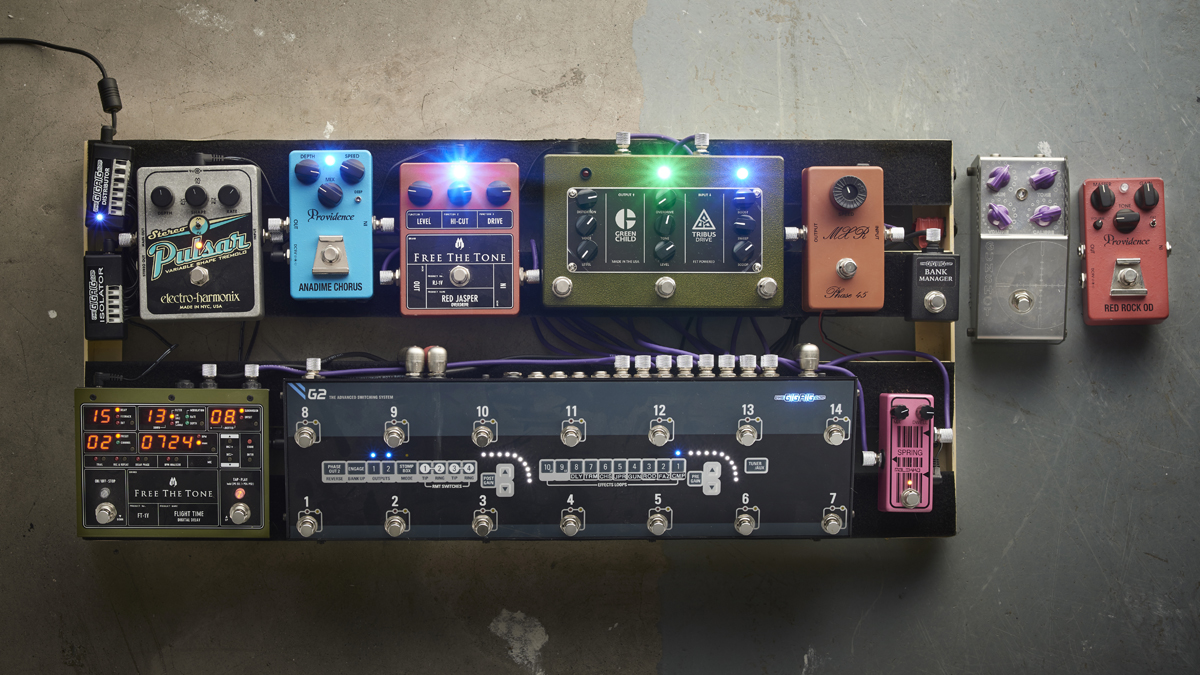
Artificial intelligence in the guitar world is nothing new, though the recent virality of ChatGPT – an Open AI software that pushes the boundary of what free AI programs can do for regular users – has seen an explosion in the number of individuals testing its seemingly limitless potential.
In 2023 alone, we’ve seen someone use Open AI to create code for a fully DAW-compatible Ibanez Tube Screamer VST clone, and late last year Louder tested its critical thinking capabilities by asking it to review Metallica music.
At every step of the way, ChatGPT has passed with flying colors. However, despite these successful experiments, it still seems as though only the surface of ChatGPT’s potential for guitar fans has been scratched. With a software as powerful as this, there’s no telling where its utility could spread to for avid six-stringers.
With that in mind, we decided to put it through its most comprehensive test yet: a rigorous pedalboard building bootcamp, during which we asked it to assemble entire rigs based on specific genres and standout guitar players.
For beginner players tragically ignoring our comprehensive range of buyer's guides, AI could be a valuable resource for finding the perfect pedals, guitars and amps for a certain style or sound, and can help bypass endless trawling through forums and videos in search of similar advice. If it passes the test, that is.
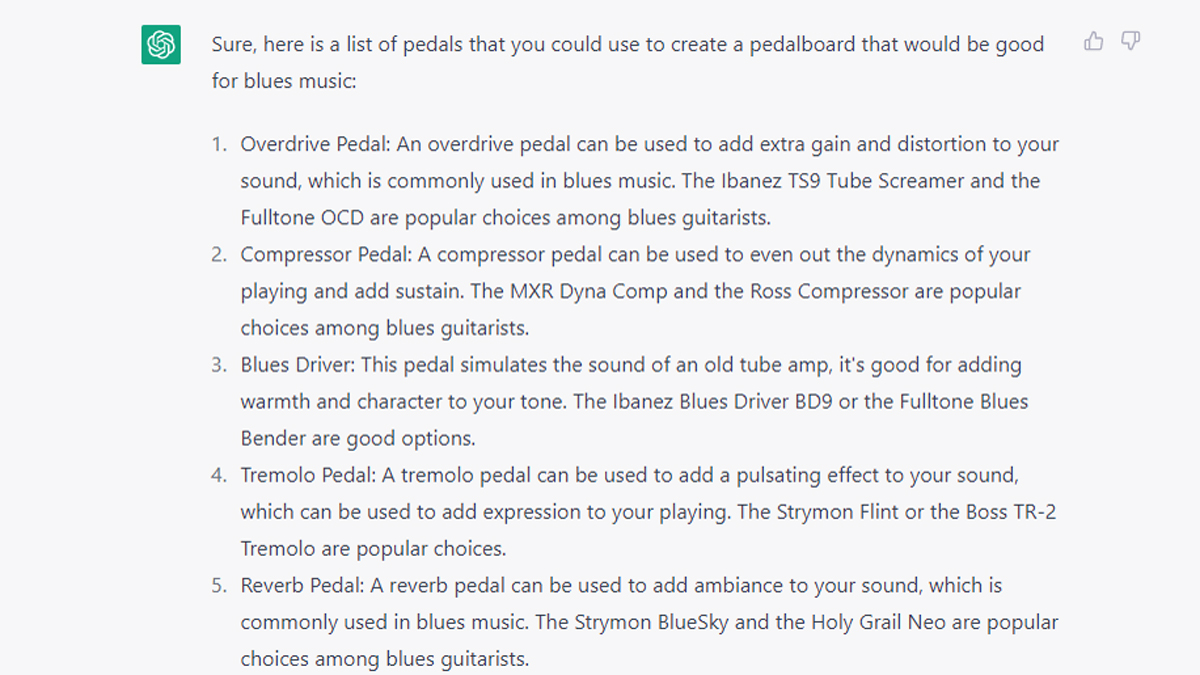
Once establishing that ChatGPT actually knew what a pedalboard is, we first set about testing its understanding of specific genres. First up, a pedalboard that would be suitable for blues music.
As you can see from its response, it got a lot of things right. It also, however, got a lot of things wrong. Selecting an overdrive pedal, compressor pedal, tremolo pedal and reverb pedal for the ‘board was a smart choice, with ChatGPT even selecting some of our own favorite examples. The Ibanez TS9 is a no-brainer, while the MXR Dyna Comp, Strymon Flint and Strymon BlueSky are used by many notable blues players.
Get The Pick Newsletter
All the latest guitar news, interviews, lessons, reviews, deals and more, direct to your inbox!
However, inclusion of an Ibanez Blues Driver BD9 and Fulltone Blues Bender as “good options” left us scratching our heads because, well, those pedals don’t exist. It’s likely it meant the Boss BD-2 and Fulltone Soul Bender, but these are pretty fatal mistakes.
ChatGPT somewhat redeemed itself when then asked about what guitars and amps would complement the above board, suggesting a Fender Stratocaster or Telecaster due to their versatile single-coil sounds. Likewise, the software seemed to understand the importance of tube amp tones in blues music, recommending Fender’s Blues Junior, Deluxe Reverb or Princeton Reverb as possible amps. Hard to argue with that.
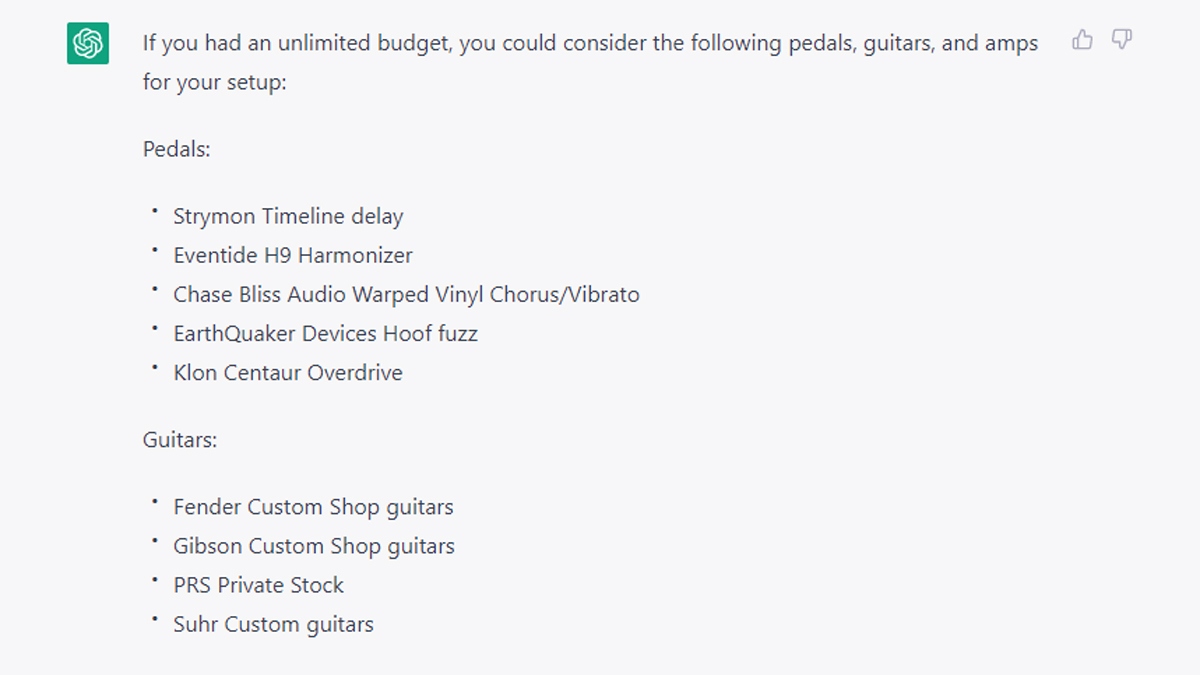
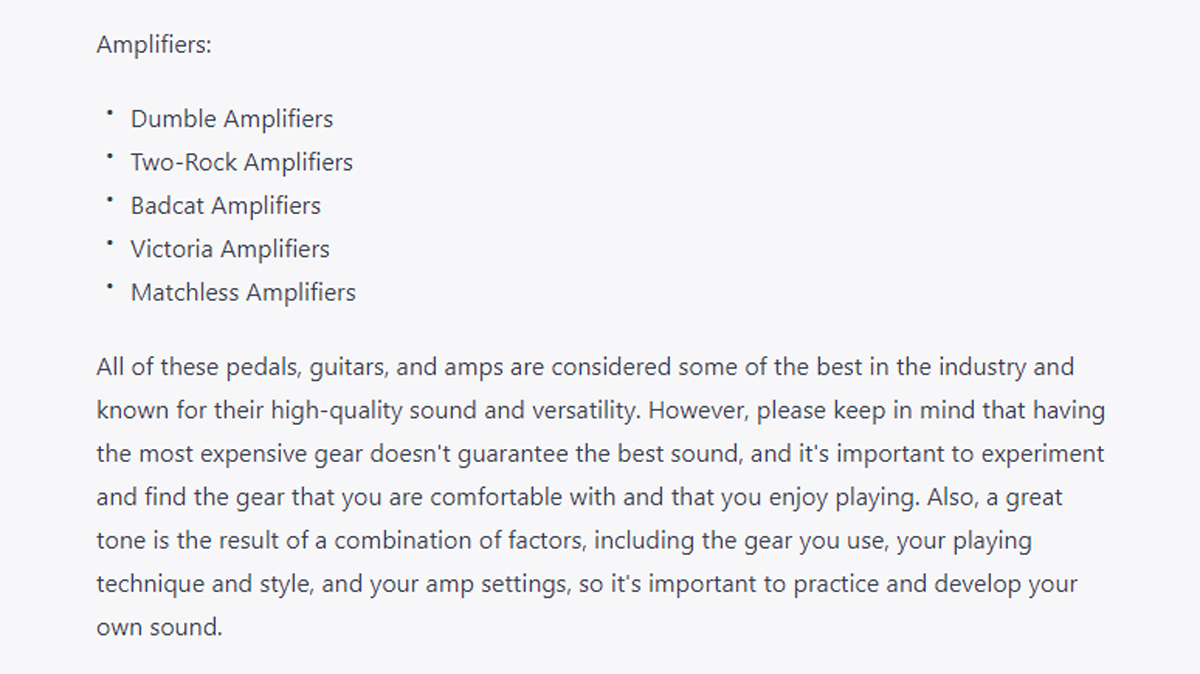
We were slightly more impressed when we asked ChatGPT to create another rig if budget wasn’t an issue. This time, it pulled out the Klon Centaur, Eventide H9 Harmonizer and EarthQuaker Devices Hoof Fuzz as options. These have all been used by the likes of John Mayer and Josh Smith, so sensible choices indeed.
As for guitars, Fender, Gibson, PRS and Suhr instruments were all tipped, while Dumble, Two-Rock, Bad Cat, Victoria and Matchless guitar amps received shoutouts for blues amps.
Our biggest takeaway from this experiment, though, is that despite recommending a load of gear, ChatGPT understands the importance of technique and personal touch as main driving forces behind an individual’s tone.
“Please keep in mind that having the most expensive gear doesn't guarantee the best sound,” the response read, “and it's important to experiment and find the gear that you are comfortable with and that you enjoy playing.
“Also, a great tone is the result of a combination of factors, including the gear you use, your playing technique and style, and your amp settings, so it's important to practice and develop your own sound.”
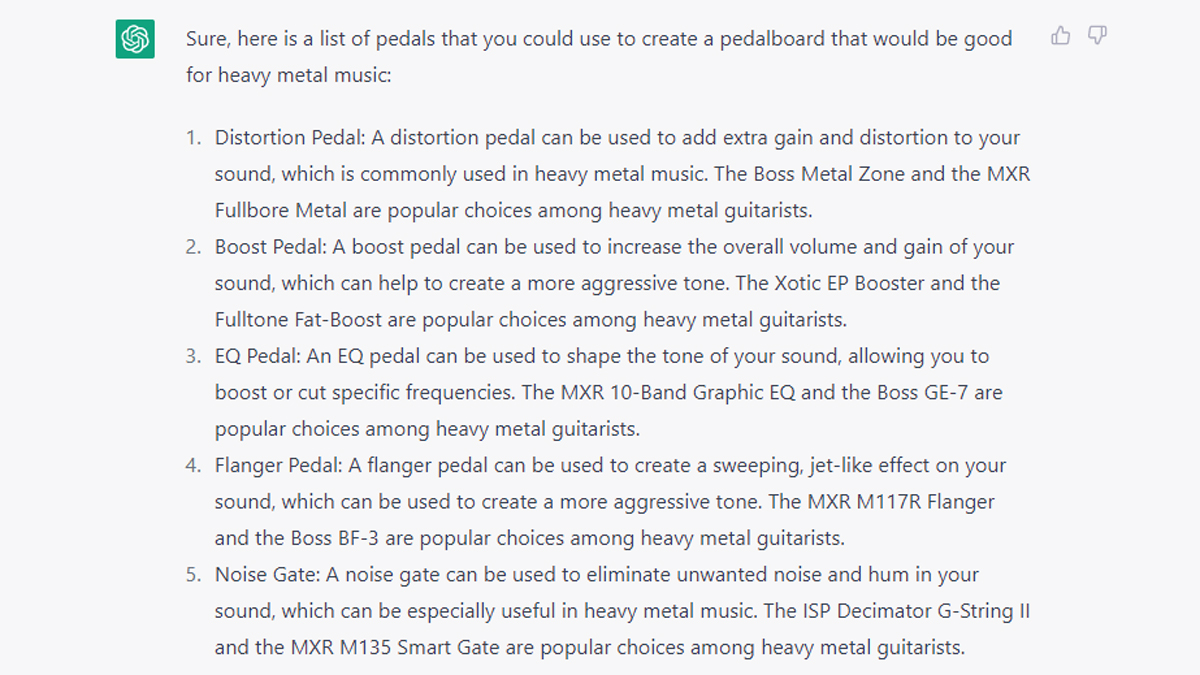
To double check this wasn’t a fluke, we ran the test again with heavy metal as the goal. Again, the answers were, generally speaking, correct – if a little uninspiring. Distortion pedals, boost pedals, EQ pedals, flanger pedals and noise gates were all noted as essential effects, with the Xotic EP Booster, Boss Metal Zone and MXR 10-Band Graphic EQ singled out.
Flexing its knowledge beyond Fender and Gibson, ChatGPT also highlighted the Jackson Soloist, Marshall JCM800 and Mesa/Boogie Dual Rectifier as competent additions to the rig.
Satisfied with the findings from our genre phase, we moved on to find out whether ChatGPT had what it took to recreate rigs in the style of certain guitar players.
When asked for a pedalboard in the style of Dimebag Darrell, the AI’s selections were somewhat bemusing. There was no mention of Dimebag’s DigiTech Whammy, with the bot instead favoring the MXR Blue Box as the octave pedal of choice. While Dimebag did use the Blue Box once or twice in the studio, it was hardly a cornerstone of his tone.
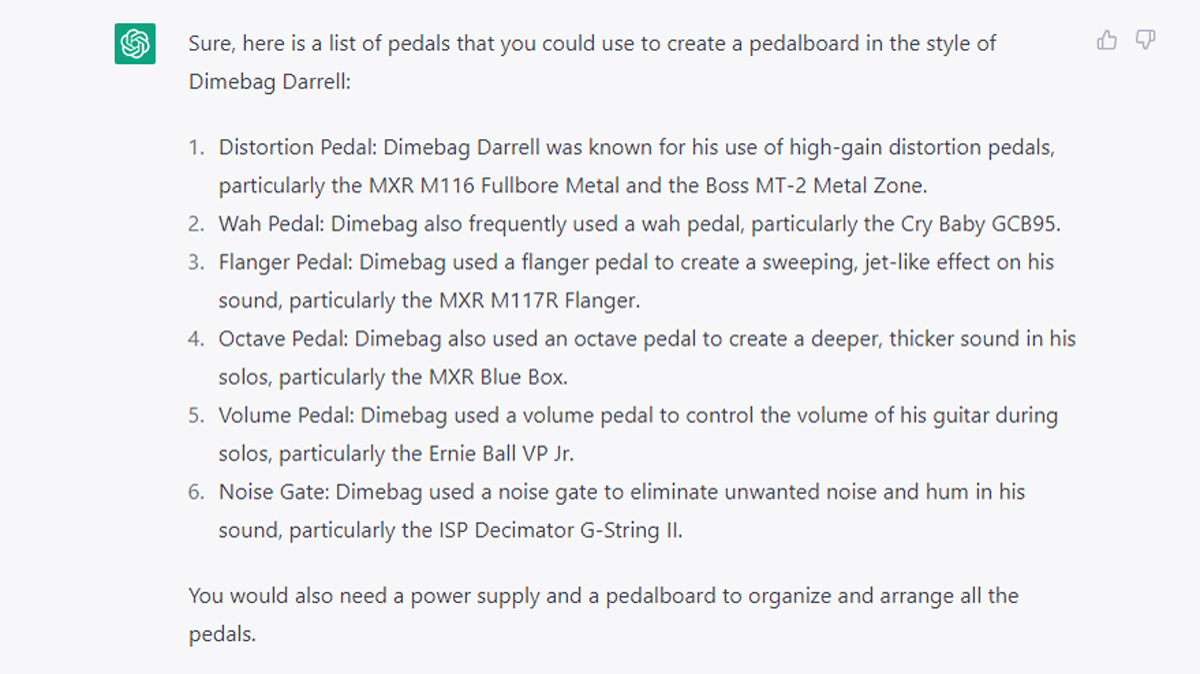
It also favored units such as MXR Fullbore Metal and ISP Decimator G-String II – both of which were released years after Dimebag’s death – over the Pantera titan’s famed favorites, like the MXR Zakk Wylde Overdrive and Rocktron Hush Noise Gate.
Now, the question was “in the style of Dimebag”, so perhaps we’re being too harsh. If anything, the software did a good job in highlighting new pedals that would help with the job, though the absence of Dimebag’s signature distortion and wah pedals was downright inexplicable. Having said that, it did recommend a Dean ML, so there is that.
It fared slightly more convincingly when asked to create ‘boards based on Jimi Hendrix and John Mayer tones, though, again, there were some mistakes, omissions and debatable inclusions.
Mayer’s AI-generated board failed to include his favorite EHX Q-Tron+ envelope filter – a key effect to many of his tracks – and name-dropped the Boss DD-3 as one of his go-to delays, when in reality Mayer is known to favor the Way Huge Aqua-Puss.
It also recommended a rogue Boss RC-3, when TC Electronic’s Ditto is usually the one spotted on his rig.
Oh, and the biggest no-no? According to ChatGPT, he plays Gibson Les Pauls. Yikes.
Credit where credit is due, it mentions the TS9, but for Hendrix’s rig, some more cracks in its thinking show. It opts for a Dunlop Cry Baby wah instead of a more player-accurate Vox alternative, for example. Plus, the MXR Phase 90 is probably unnecessary.
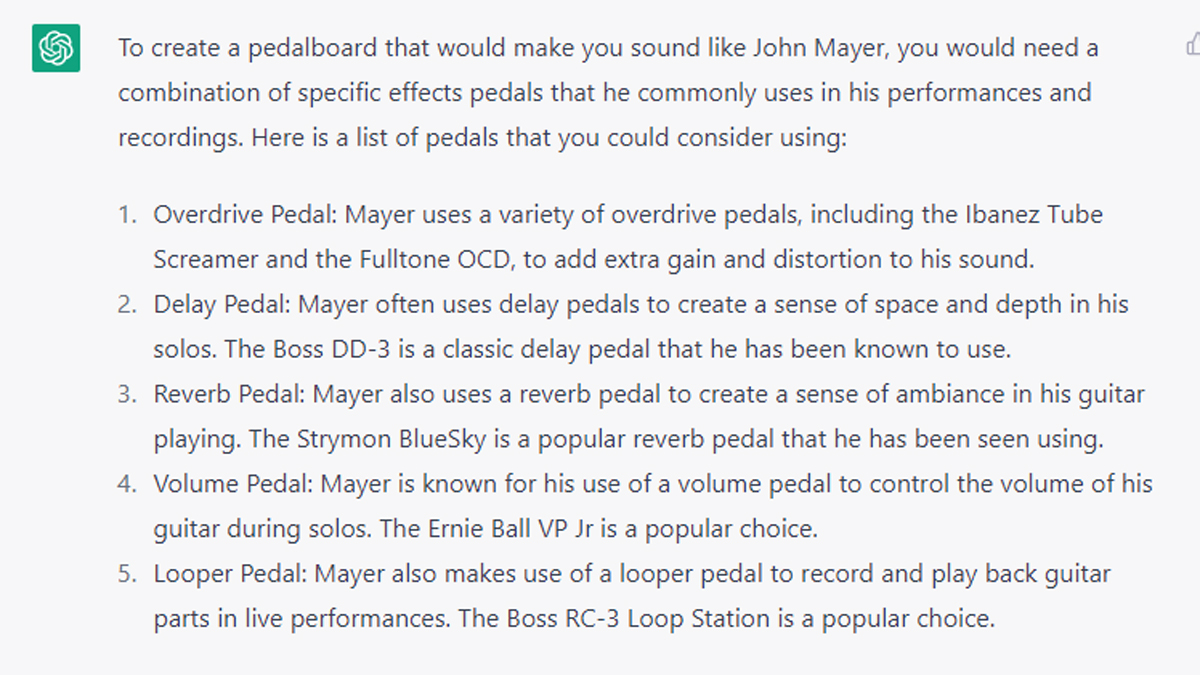
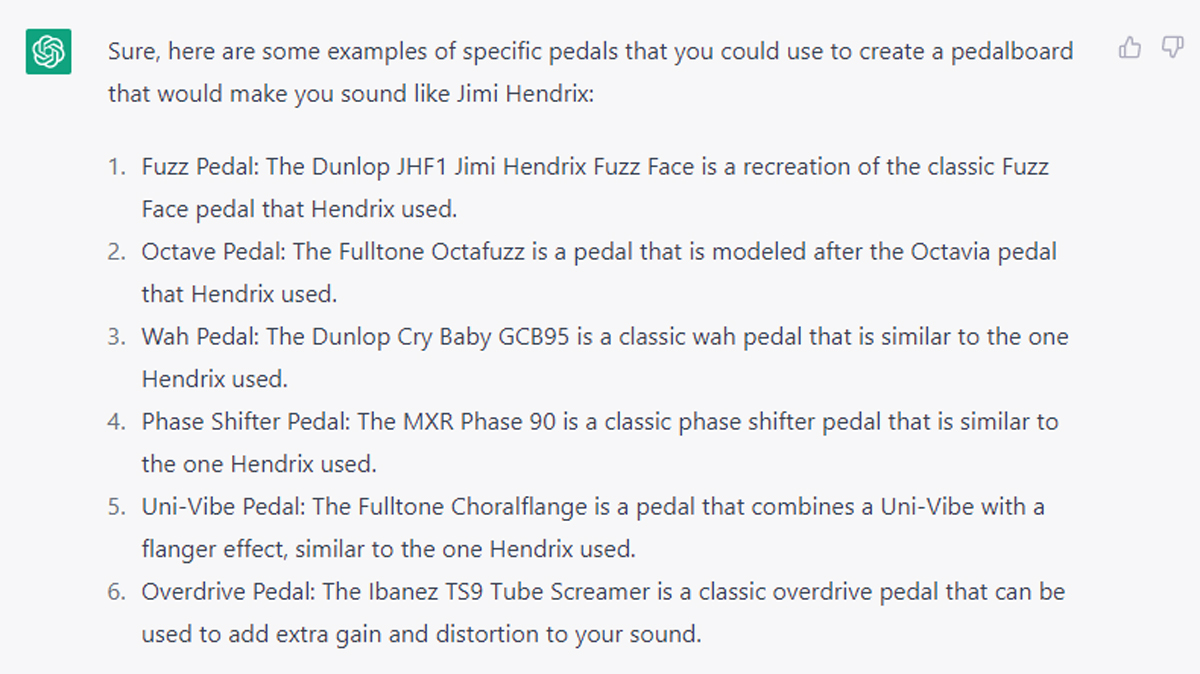
It’s a valiant effort, though, and again, it’s a collection of pedals that wouldn’t perform too poorly if you were after a Hendrixian tone.
But, in all three cases, ChatGPT stresses that gear only takes you so far: for Dimebag, it notes, “Having the right pedals is not enough to sound like Dimebag Darrell, his style, tone and technique are unique and can't be copied just by using the same pedals.
“He was a master of his instrument, and you can use these pedals as a starting point to develop your own sound and style.”
In summary, it’s all fairly confusing and one-dimensional. While ChatGPT knows product names – and even that is debatable in some instances – and can string together some basic ‘board elements, a few pedal choices and omissions left us scratching our heads.
It turns out there really is no substitute for advice and recommendations from real people who have actually played the gear and listened to the music of certain players – like, ya know, the fine folk at Guitar World, for instance.
Even the software itself is quick to admit that, reiterating almost every step of the way that tone and technique are individual playing traits, and can’t be easily achieved by simply buying more gear. If anything, it’s an impressive starting point, but not one that should be trusted at face value.
Heck, if it was, we’d still be scouring the internet for that Ibanez BD9…

Matt is the GuitarWorld.com News Editor. He has a Masters in the guitar, a degree in history, and has spent the last 16 years playing everything from blues and jazz to indie and pop. When he’s not combining his passion for writing and music during his day job, Matt records for a number of UK-based bands and songwriters as a session musician.
“It holds its own purely as a playable guitar. It’s really cool for the traveling musician – you can bring it on a flight and it fits beneath the seat”: Why Steve Stevens put his name to a foldable guitar
“Finely tuned instruments with effortless playability and one of the best vibratos there is”: PRS Standard 24 Satin and S2 Standard 24 Satin review









